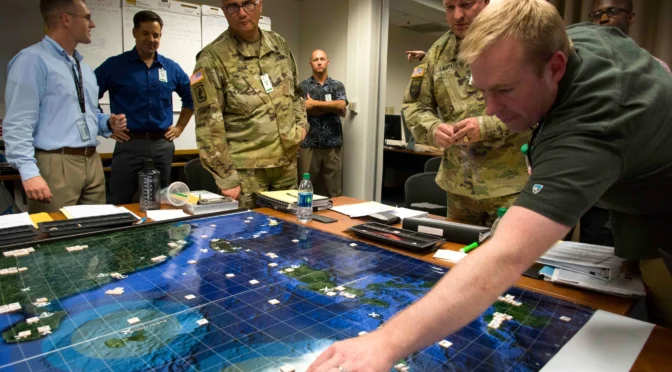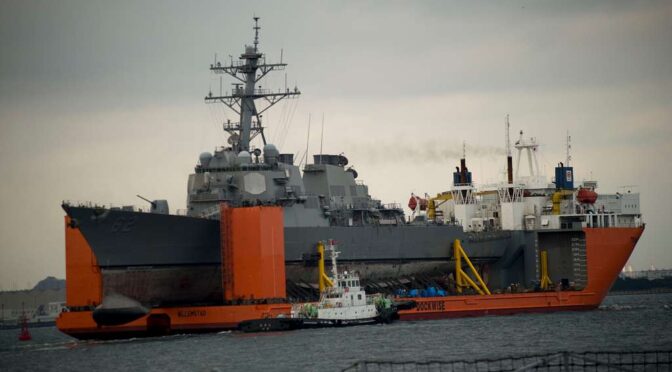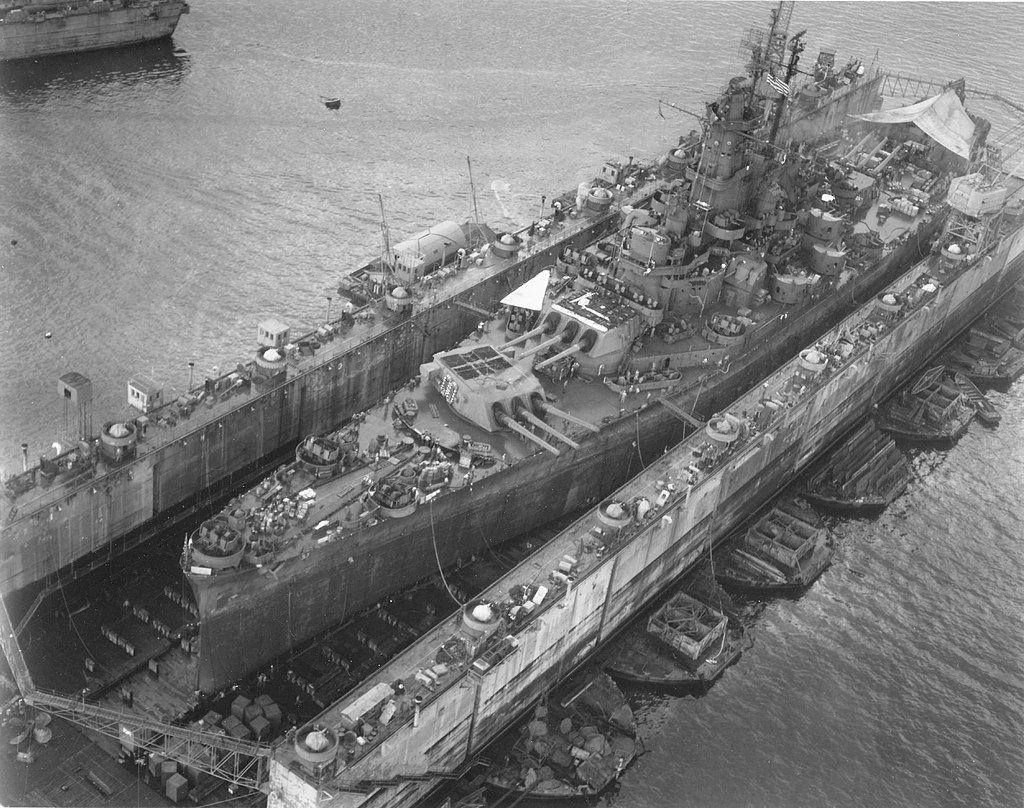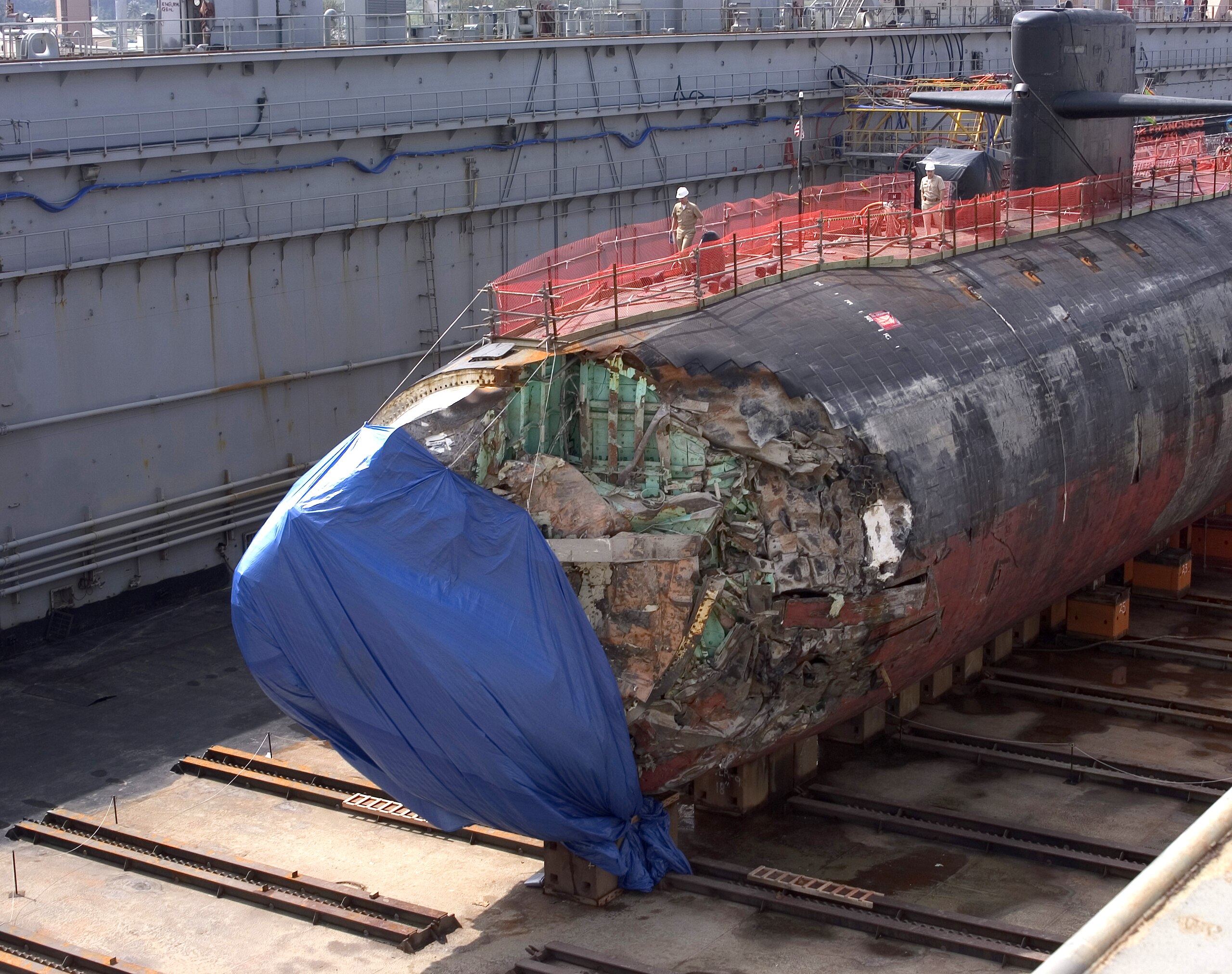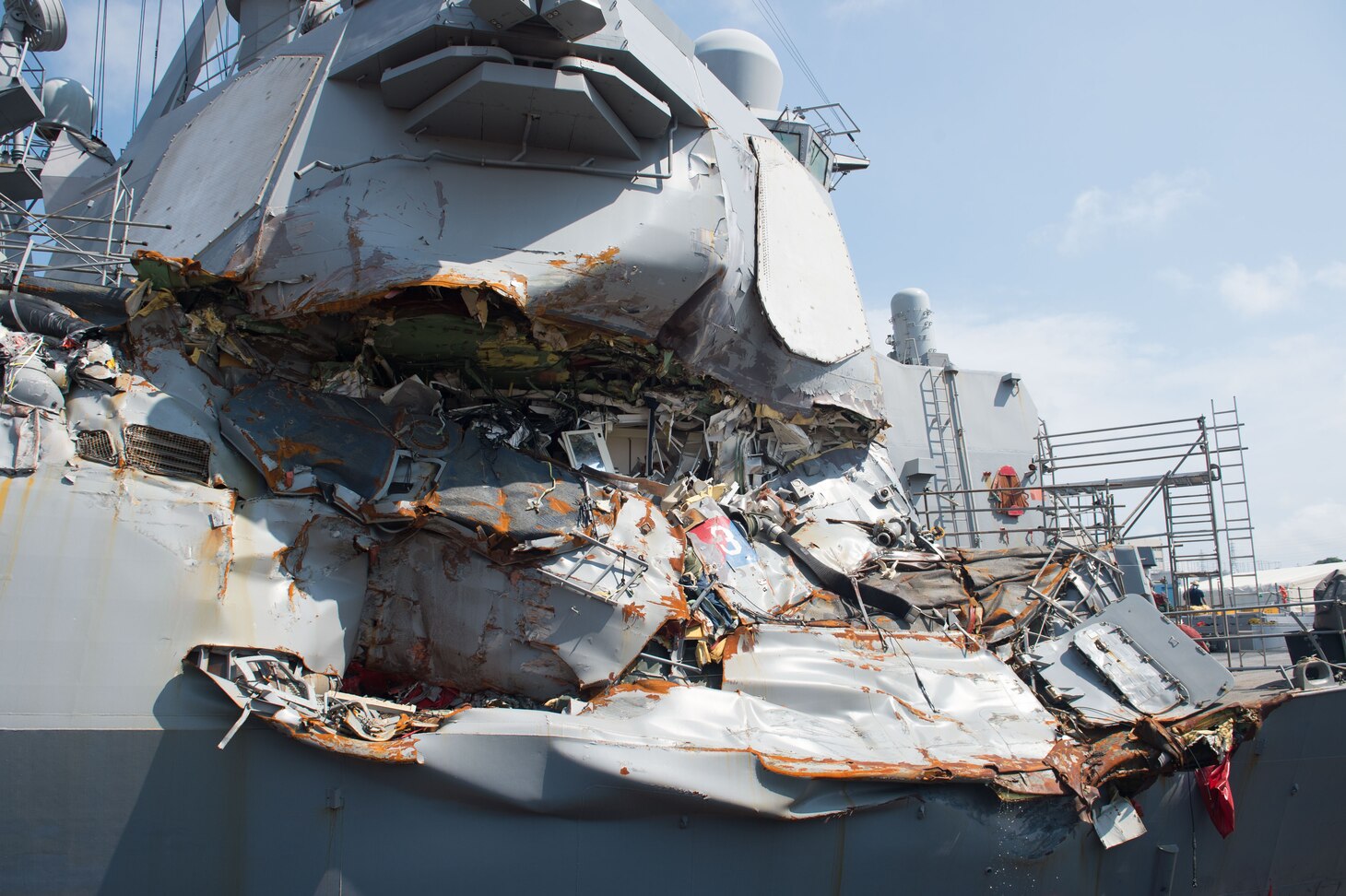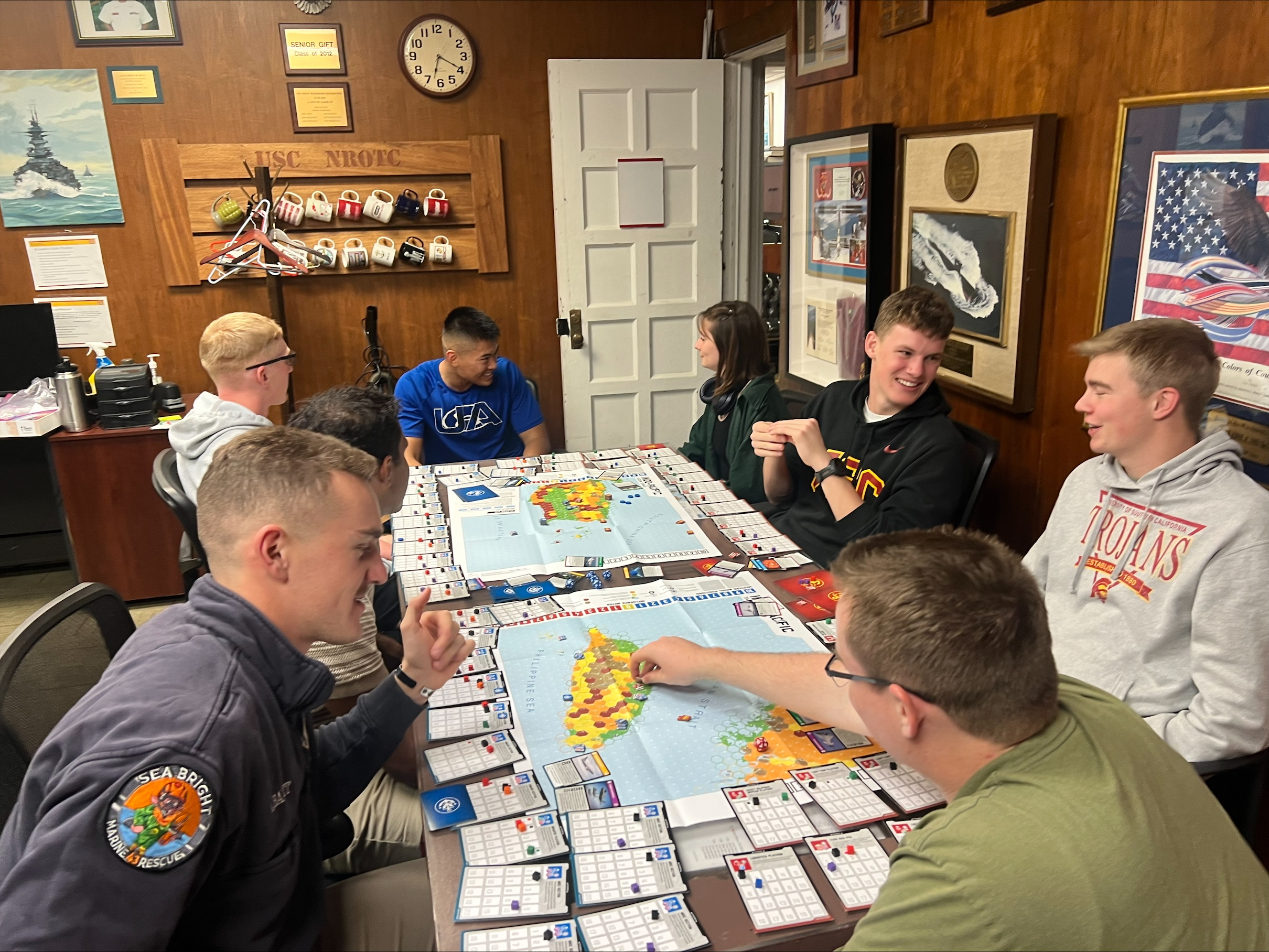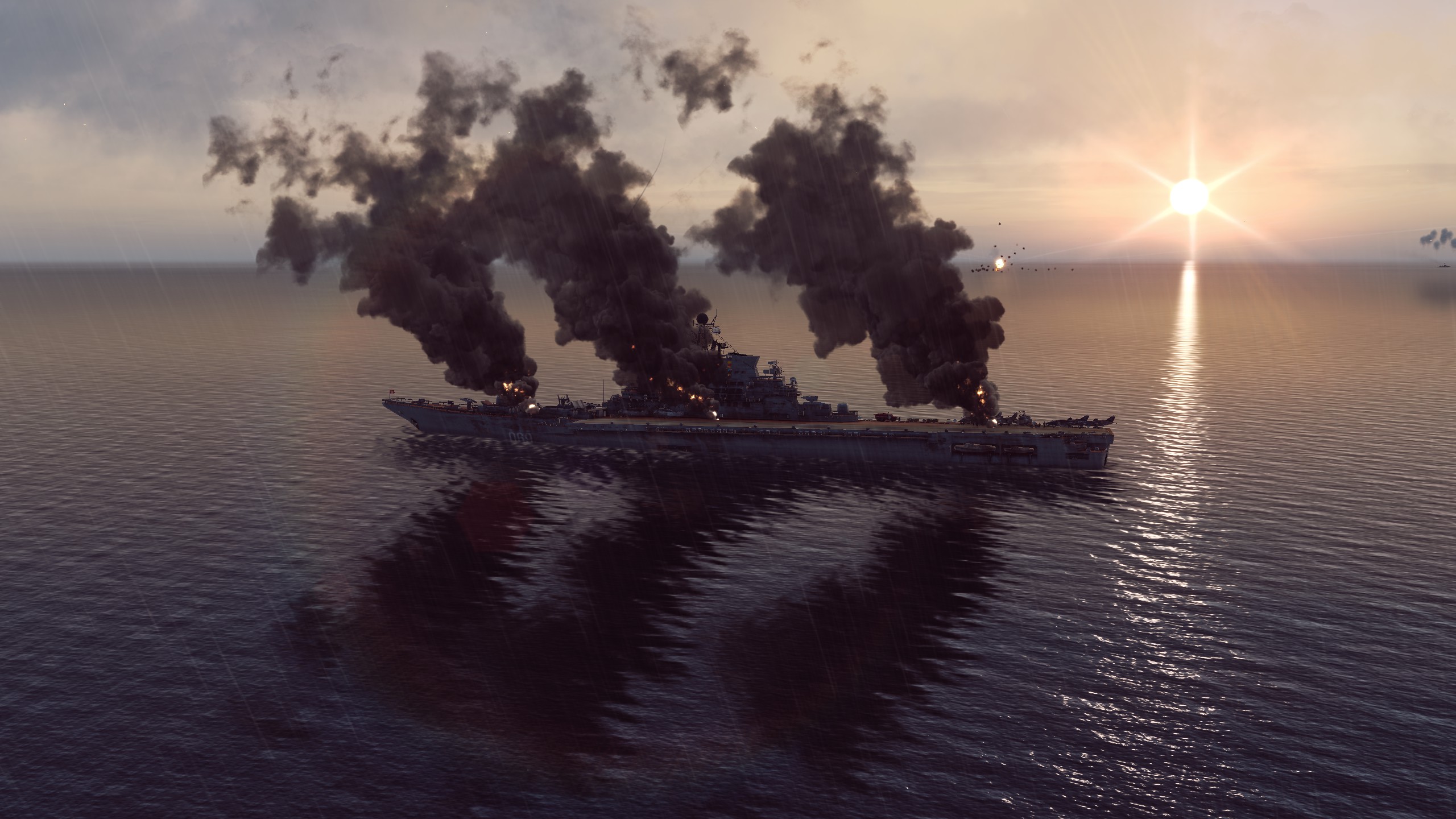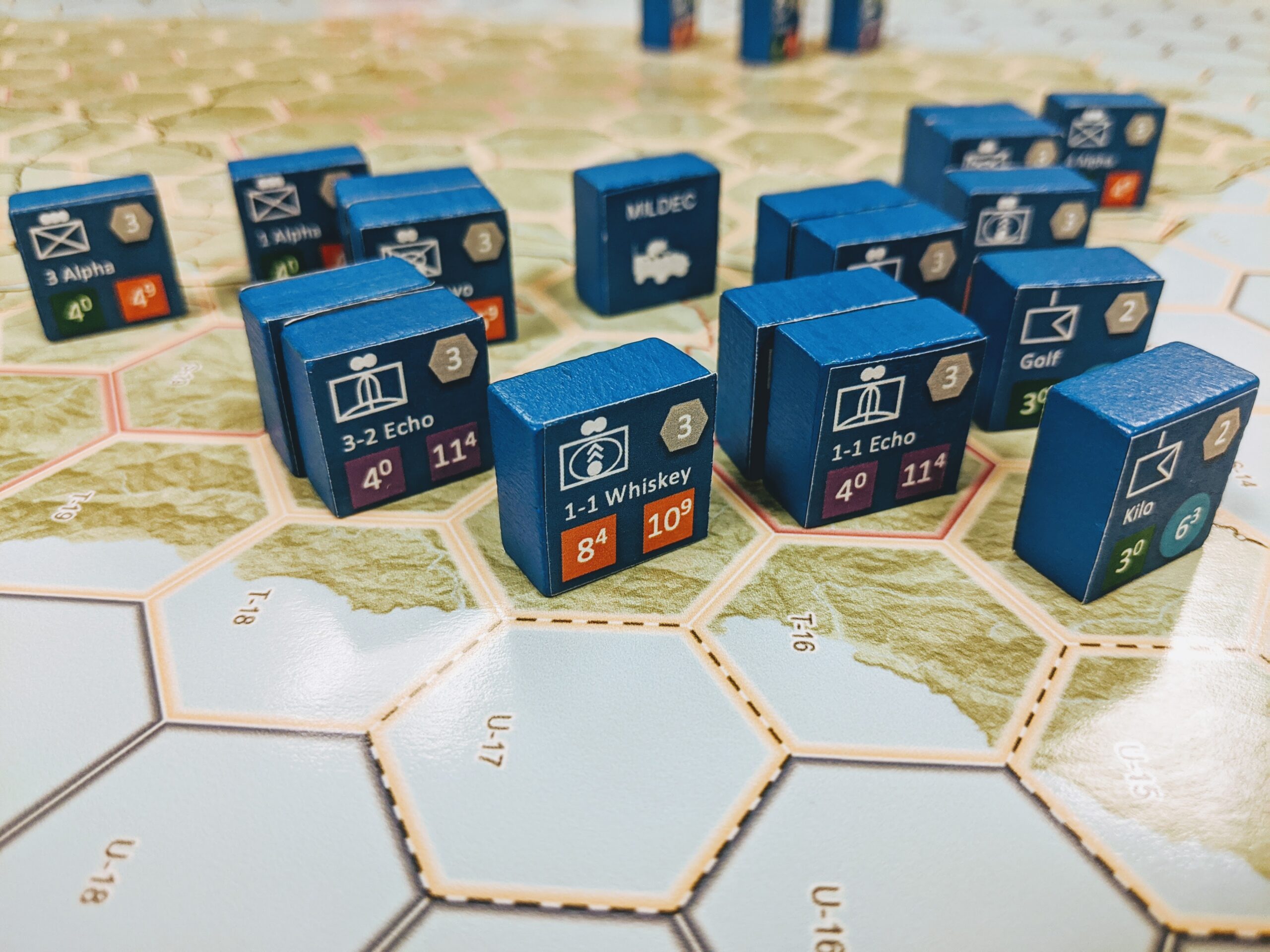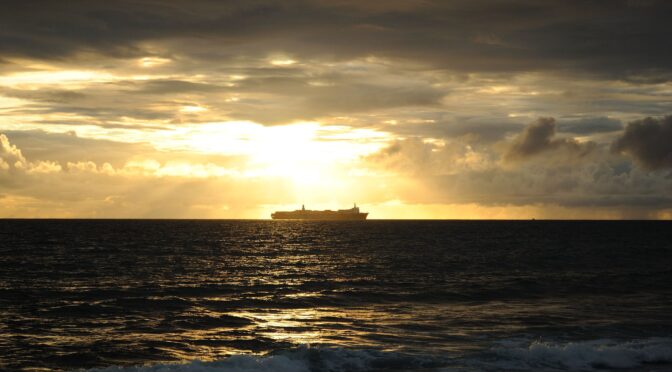By Jeff Appleget and Jeff Kline
Introduction
In the decade since Deputy Secretary of Defense Robert Work began his 2014 initiative to reinvigorate wargaming, there has been a decided uptick in the number of wargames being conducted for DoD. However, the quality and relevancy of DoD wargaming has not been uniform.
One of the primary causes for this lack of consistency is the dearth of wargaming capacity residing within DoD. Many combatant commands turn to the private sector and pay premium rates to have wargames conducted for them. Other DoD organizations conduct wargames using a pick-up team extracted from their staff that has little or no knowledge of wargaming. Wargaming is a skill that every Commander or Lieutenant Colonel should possess. However, there has been no DoD focus on educating uniformed personnel who can initiate, design, develop, conduct, and analyze wargames for their services.
This article highlights the Navy’s current wargaming education capability at the U.S. Naval Postgraduate School and makes recommendations for the Fleet to create a pipeline of naval officer wargamers to enhance the professionalism, preparedness, and knowledge of the servicemembers and organizations of the naval services.
Background
The Naval Postgraduate School (NPS) has been wargaming almost since its establishment in 1909. As with any military education, wargaming’s state of the art has evolved and advanced since that time. NPS’s sister institution, the Naval War College (NWC), contributed greatly to the U.S. Navy’s success in World War II through the focused Plan Orange series of wargames conducted from 1919-1940.
The use of wargaming waned as the 1960s ushered in the computer era and proponents of “Systems Analysis” advanced the idea that “computerized wargames” (what is known today as combat simulations) could replace commanders gathered around charts and maps and working through the risk calculus and the consequences of employing their forces against a thinking, malevolent adversary. In the 1970s and 80s, DoD created a Modeling and Simulation (M&S) enterprise that allowed combat simulations to dominate the analysis that underpinned the DoD’s acquisition process.
This analysis capability led to the massive U.S. Armed Forces build up that contributed greatly to the break-up of the Soviet bloc in the late 1980s. The Abrams tank, the Aegis cruiser, and the A-10 Warthog all benefited from systems analysts using combat simulations to quantify the goodness these weapon systems would bring to U.S. forces in a NATO-Warsaw Pact fight. In 1991, Operation Desert Storm gave U.S. forces one more chance to fight a ground-focused kinetic war before the U.S. plunged into nearly two decades of counterinsurgency and irregular warfare conflicts, warfare that was really a poor fit to analyze using our kinetic-focused combat simulations.
2014 saw a U.S. Department of Defense wargaming renaissance as Deputy Secretary of Defense Work championed a reinvigoration of wargaming throughout the services. As a result, senior leaders finally began to understand that wargames and combat simulations were two completely different tools that, when used properly together, could provide the foundation for robust analysis of new concepts, platforms and technologies. The use of these and other tools in a campaign of analysis provided organizations the means to do both qualitative and quantitative analysis to inform a spectrum of decisions to better position the U.S. DoD for an uncertain future against two growing powers that employ both kinetic forces and non-kinetic hybrid threats. The challenge is building and maintaining a DoD-wide wargaming capability to conduct such analyses.
Bringing the Fleet to NPS Wargaming Education
The NPS Operations Research Department was leaning forward and in 2009 began its own wargaming renaissance, positioning NPS to better advantage not only the Fleet, but the other DoD services and U.S. allies and partners.
Focus on the Fleet
To accomplish this, the Wargaming Applications course was re-focused on applying the craft of wargaming to address existing and future Fleet challenges. Teams of junior to mid-grade officers provide direct support to real world sponsors by designing, developing, conducting, and analyzing wargames that focus current or future challenges of the Fleet, our sister services, allies, and partners. The wargaming course culminates with officer-conducted, Fleet-sponsored wargames during “wargaming week,” normally the last week of the academic quarter. NPS warrior-scholars come from all branches of DoD, and many of our partners and allies. Wargames are conducted at the Unclassified, CUI, Secret, and Top Secret/SCI levels.
Wargaming week occurs at NPS in early June (5-10 wargames) and early December (1-3 wargames). Outside attendees are welcome to attend wargaming week given that they have the proper security clearances. Since 2009, NPS officer teams have designed and conducted over 100 wargames, helping the Fleet underpin flagship concepts such as Distributed Maritime Operations, Expeditionary Advanced Base Operations and Stand-In-Forces, and assessing a spectrum of Contested Logistics issues for OPNAV N4.
Joint and coalition wargames are also conducted for Fleet partners, such as examining the impact of emerging maritime capabilities and technologies for the Taiwan CNO, examining interoperability challenges for the U.S. Marine Corps Forces – Pacific (MARFORPAC) and the Australian Defence Force (ADF), and assessing the impact of emerging technologies for the Defense Advanced Research Program Agency (DARPA), the Office of Naval Research (ONR), and the Office of the Secretary of Defense – Strategic Capabilities Office (OSD-SCO).
Modernizing Wargaming
Combining the recent operational experience that our warrior-scholars bring to NPS with a seasoned faculty that conducts cutting-edge research for the Fleet provides NPS a competitive advantage in innovation over other DoD schools, FFRDCs, and civilian universities. As wargaming entered the second half of the 20th century, the surge in the DoD modeling and simulation (M&S) enterprise served to push wargaming to the side because senior military and civilian leaders didn’t understand that simulations could not supplant wargaming. Today the urge to again ‘computerize’ wargaming is re-emerging, necessitating another round of wargaming education to ensure we align both wargaming and our M&S enterprise to provide best advantage to DoD in the future.
The adjudication of wargames can leverage M&S if done in a deliberate and thoughtful manner, ensuring the M&S chosen to integrate into wargames is ‘fit for purpose.’ We have been researching the integration of M&S into wargames since 2009. To facilitate this research, warrior-scholars and faculty from our Modeling, Virtual Environments, and Simulation (MOVES) Institute have been integrated into the wargaming course and have tested many M&S tools in NPS wargames including Command PE (Professional Edition), a commercially available simulation; MAST (Modeling and Simulation Toolkit), a U.S. Navy owned agent-based simulation, as well as other M&S tools widely available or created by NPS warrior-scholars. Preliminary research results indicate that the purchase of a ‘one-size-fits-all” uber wargaming software platform is, in most cases, ill-advised.
Bringing NPS Wargaming Education to the Fleet
Mobile Education Team (MET)
In 2011, NPS conducted its first five-day Mobile Education Team (MET) wargaming workshop for the Royal Canadian Air Force in Trenton, Ontario. Since then, we have conducted over 50 MET workshops across four continents. The wargaming workshop is designed to stand up an organic wargaming capability in an organization by creating wargaming apprentices from 16-20 of the organization’s personnel. The teaching philosophy, learn by doing, is exactly the same as the NPS resident wargaming course. Course participants are formed into teams. The teams then design, develop, conduct and analyze a wargame for their organization in the span of 5 days.
NPS has conducted these workshops for U.S. Naval Forces Europe and Africa (NAVEUR-AF), Sixth Fleet, U.S. Army Europe and Africa (USAREUR-AF) U.S. Naval Forces-Korea, Commander, Pacific Fleet, U.S. Marine Corps Forces-Pacific, II Marine Expeditionary Force, Marine Corps Warfighting Laboratory, Marine Corps Combat Development Command, U.S. Strategic Command, U.S. Central Command, U.S. Africa Command, Taiwan Armed Forces, Indonesian Navy, Australian Defence Force, NATO Joint Warfare Center, NATO Special Operations Forces, as well as many others.
As organizations stand up and matured their wargaming capabilities, we began to field requests for advanced wargaming workshops. Our long-time partnership with the ADF resulted in a special three-week course that combined both basic and advanced workshops. The first two weeks are an extended basic analytic workshop that provides more exposure to a variety of wargames while still embracing the series of practical exercises that results in wargames being conducted by participants at the end of the two-week workshop. The third week is an advanced course that focuses on topics selected by the sponsor and tailored to participants who have completed the basic course in previous years and completed at least a year of practical wargaming experience. Common advanced course topics include wargaming facilitation, building the wargame’s foundation by the decomposition of a sponsor’s key issues and case studies of wargames that embrace innovation and unique models, methods and tools.
As NPS began our second decade of MET workshops, we were asked by organizations who had experienced our basic wargaming workshops to create a wargaming practitioner course consisting of three modules delivered over the course of 18-24 months at the sponsor’s home station by the NPS wargaming MET. After attending an NPS MET 5-day basic wargaming module and passing the wargaming apprentice certification exam (earning 4 Continuing Education Units (CEUs)), the wargaming apprentices are assigned to work on wargames for their organization and conduct self-study activities to prepare for the wargaming journeyman module.
The wargaming journeyman module is delivered by the NPS wargaming MET team, and upon the completion of the wargaming journeyman certification exam students earn an additional 4 CEUs. These wargaming journeymen again work on wargames for their organization and conduct self-study activities to prepare for the third and final module, the wargaming practitioner module. Upon completion of this module, students are then certified as wargame practitioners and 4 additional CEUs. Two EUCOM organizations, NAVEUR-AF and USAREUR-AF, have begun the process of creating wargaming practitioners in their organizations.
Northwest Pacific Wargame (NWPAC)
In 2024, the Naval Postgraduate School conducted its first Chief of Naval Operations (CNO)-directed wargame. The Northwest Pacific wargame had been conducted for over 35 years by the Naval War College. In recent years, the venue was moved from Newport, RI to Japan. The wargame is sponsored by the Commander of the U.S. Pacific Fleet. The U.S. Seventh Fleet and the Japanese Maritime Self-Defense Force are the two primary organizations that provide the players, augmented by other joint and combined players. The transition from NWC to NPS required a new paradigm because of the different staffing models each organization has.
While the NWC relies on a wargaming faculty of over 30 personnel with a support organization, NPS combines staff, faculty and NPS students to form the core of the wargaming team. NPS has leveraged several different Operations Research (OR) curriculum courses (Wargaming Applications, Spreadsheet Modeling, Introduction to Joint Combat Models, Case Studies in OR) to have NPS warrior-scholars prototype and test M&S adjudication models, conduct post-game analysis, and most importantly, build the nucleus of the wargaming execution team to deploy to Japan to conduct the wargame.
Keeping Wargaming in the Fleet
As Robert Rubel pointed out in his excellent CIMSEC article “Restore Wargaming Focus to the Naval War College,” the Navy needs to produce a “critical mass of officers with intensive wargaming experience.” There are several challenges that must be negotiated to create the requisite pipeline to achieve this critical mass.
Creating the critical mass
While both the NPS resident and MET courses and workshops do provide the Fleet, DoD, and our allies and partners officers who have designed, developed, conducted, and analyzed wargames for real-world sponsors, the numbers of officers with this unique skillset needs to increase ten-fold to begin to build that critical mass of wargamers in the Fleet that Robert Rubel calls for.
But how many uniformed wargamers does DoD need? As a minimum, every combat arms Lieutenant Colonel and unrestricted line officer Commander should be a wargamer. Every officer with an Operations Research designation should be a wargamer. Every military strategist should be a wargamer. Every flag officer should be a wargamer. We should stop thinking of wargaming as something someone else does for DoD and start accepting responsibility for wargaming to keep the Fleet ready for tomorrow’s fight as well as helping us to shape the force so that we are prepared for an uncertain future.
We should be conducting analytic wargames to better inform future force structures and technologies. We should be conducting educational wargames to allow us to better understand current threats and operational environments. We should be conducting experiential wargames to keep our battle staffs familiar with their wartime roles and to be prepared to adapt plans in the face of an aggressive and unpredictable enemy.
This argues for wargaming to be inserted into JPME. And let us be clear about creating wargamers. Even the huge NWC success with Plan Orange from 1919-1940 didn’t create wargamers—the participants were players in those wargames. The Plan Orange wargames were designed and conducted by the NWC faculty.
Having the skillset needed to design and conduct wargames cannot be learned by simply being a player in a wargame. The book The Craft of Wargaming is a reference for any DoD officer tasked with leading a wargaming effort. It is based on our 11-week resident course and used for our MET engagements.
Utilizing the Critical Mass
Wargaming is a craft that requires its practitioners to keep their wargaming certifications current by designing, developing, conducting and analyzing wargames. This requires some thought and likely restructuring by the Fleet. Every Fleet organization that creates plans should have wargamers. Every numbered fleet and every Marine Expeditionary Force should have wargamers. Each of these organizations should be wargaming their plans on a routine basis. One NPS OR graduate stood up a wargaming cell at CENTCOM and quickly concluded that wargaming should be used in most, if not all of the seven planning steps outlined in Joint Pub 5-0. Currently, wargaming is only mandated in step four. Also, any plan that has sat on a shelf for over a year is likely of little value. Plans should be wargamed and updated at least once a year.
To begin to meet this challenge, we propose that every numbered U.S. Navy Fleet and Marine Expeditionary Force designate at least 10 staff officers to become wargamers.
Creating a wargaming capability at the Fleet’s operational command levels
The Navy needs to embed uniformed operations research analysts in each numbered U.S. Navy fleet by coding at least five staff billets with the Navy’s OR subspecialty 3211. In major joint staffs it is common for these analysts to be group together in some Commander’s Advisory or Analytical Group, but for a fleet staff these officers should be distributed to the future operations planning cell, the assessment cell, and the logistics cell, wherever they may reside in the staff’s N-codes.
When a wargame is called for either in plans’ generation or assessment, these officers will form the core of a “cross code” wargaming team to design, develop, execute, and analyze the wargame for the commander. They will be augmented by other staff members who have gained education and experience in fleet wargaming. The fleet’s challenge is to maintain a critical mass of wargame experience in their uniform staff in the face of constant billet rotation. To do this, wargaming education must be integrated into naval staff preparation courses, or as part of an unrestricted line officer’s regular career pipeline.
Creating a pipeline to educate Fleet wargamers
A second step in integrating wargaming skills to the fleet is for the Navy to embrace higher education by sending URL officers to the NPS OR program. This will provide the seed corn to feed both the numbered fleet OR billets and to increase the number of Navy officers with the requisite wargaming experience. In the early 1990s it was not uncommon for each NPS Operations Research officer cohort to have as many as ten URL officers. That number has dwindled to two or three today. Type Commanders should insist on increasing their educational quotas for Operations Research. These officers bring a host of operationally relevant analytical skills to the fleet staffs and ships: from data analytics, operations assessment, campaign analysis, modeling and simulation, to wargaming.
Tactical Training Groups can also begin to offer a one-week wargaming course either leveraging NPS instructors or creating a core capability to instruct within their own staff. This course should be made a prerequisite for fleet staff assignment, unless an officer has already received wargaming education and been certified as a wargaming practitioner. In turn, officers can receive a new wargamer Additional Qualification Designator (AQD) or Navy Officer Billet Classification (NOBC) code for their Officer Data Card to enhance opportunities for assignment and promotion.
The Naval Staff College at the Naval War College may also begin to integrate wargaming education and practice in their curriculum. Officers involved in these courses would then be available to contribute directly to the Naval War College’s wargaming agenda.
As these institutional changes occur, individual fleet commanders should designate staff across their codes as the wargaming team and receive the week-long NPS MET wargaming course. To mitigate staff rotation challenges, this MET course can be hosted every year or eighteen months and assigned a real-world fleet issue to wargame as desired by the commander. This proposal will ensure the staff has qualified wargamers and provides a regularly scheduled wargaming course for the commander to leverage in their fleet’s planning cycle.
Conclusion
The Naval Postgraduate School has played a critical role in DoD wargaming education for the past 15 years. Through our NPS resident wargaming course, we have educated over six hundred officers who can design wargames. At the same time, NPS officer teams have conducted over one hundred wargames for DoD, allies and partners. NPS has provided wargaming courses through its Mobile Education Team in both the INDOPACOM and EUCOM areas of responsibilities to over one thousand U.S., allied and partner defense professionals since 2011. NPS has been exploring modernizing wargaming through the judicious integration of models and simulations for well over a decade. As we prepare for the daunting security challenges currently facing the U.S. and its allies and partners, NPS wargamers will be using their skills to ensure we meet those challenges when the time comes.
Dr. Jeff Appleget is a retired Army Colonel who has taught wargaming at NPS since 2009, mentoring over 100 warrior-scholar conducted wargames. He is a co-author of the book The Craft of Wargaming.
Jeff Kline is a retired Navy officer who is currently a Professor of Practice in the Operations Research department. Jeff has taught Joint Campaign Analysis, led the NPS Warfare Innovation Continuum, and coordinated Naval wargaming sponsorship for NPS wargaming for over 20 years.
Featured Image: NPS students participate in analytic wargames they designed to explore solutions for some of DoD’s most pressing national security concerns. (NPS photo by Javier Chagoya)

